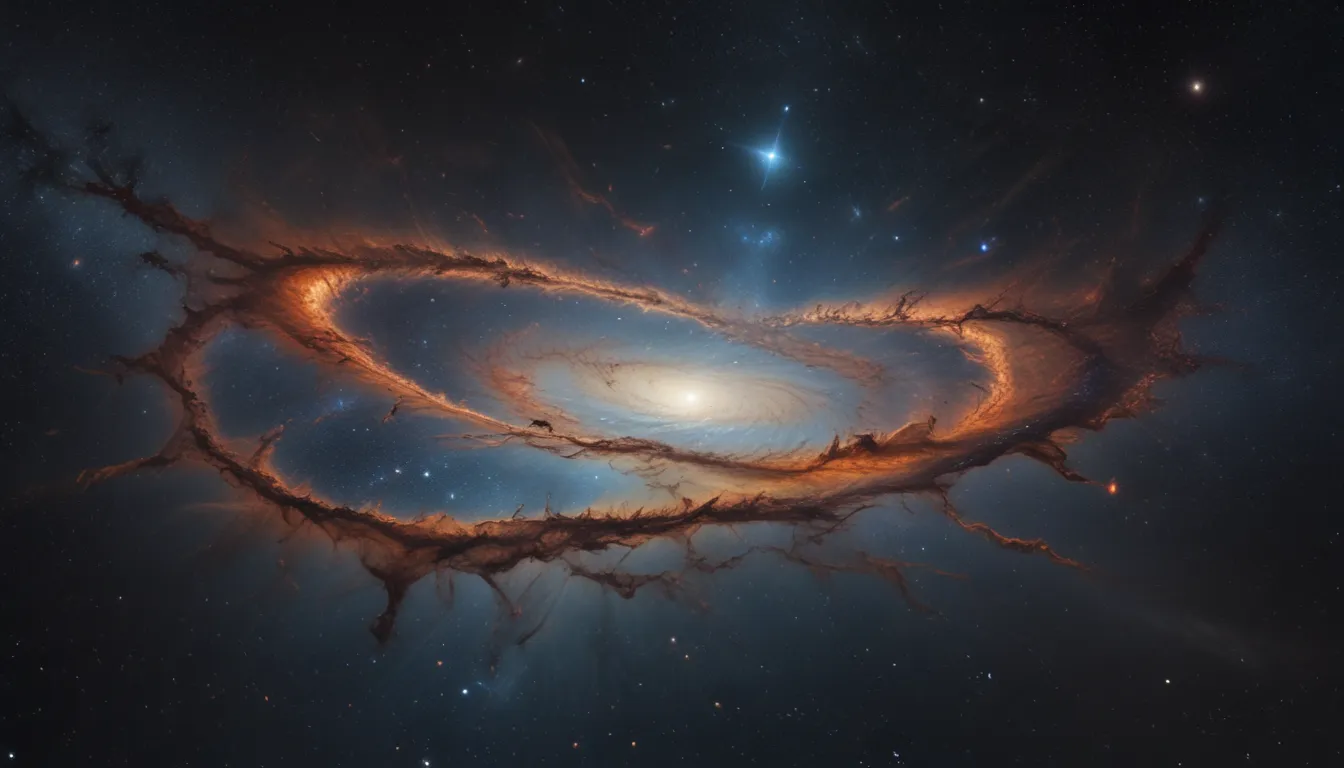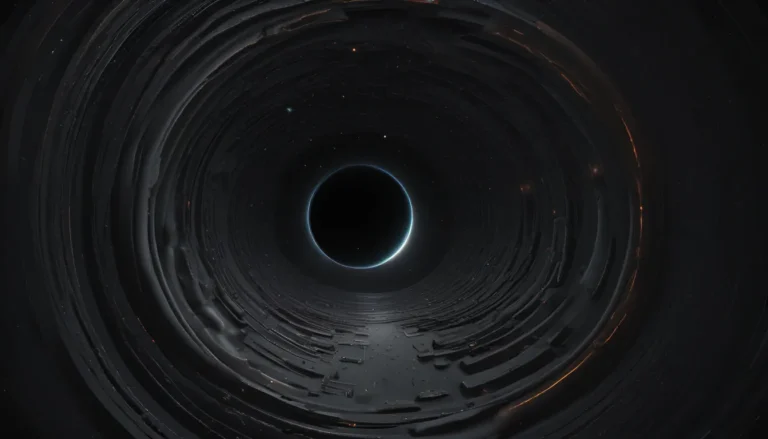The pictures we use in our articles might not show exactly what the words say. We choose these pictures to make you interested in reading more. The pictures work together with the words but don’t take their place. The words still tell you the important facts.
Centaurus A, also known as NGC 5128, stands as a celestial marvel that has enchanted astronomers and space enthusiasts with its unique features and proximity to Earth. Situated in the constellation of Centaurus, this giant galaxy with a supermassive black hole, dusty disk, and powerful jets has become a subject of extensive study and fascination in the realm of astronomy. Join us in unraveling the mysteries of this enigmatic galaxy as we delve into 19 captivating facts about Centaurus A, shedding light on its origin, structure, and remarkable characteristics.
Unveiling the Enigmatic Centaurus A
Centaurus A (NGC 5128) is a galaxy that stands out as one of the most captivating and extensively studied celestial bodies in the universe. With its active galactic nucleus emitting high-energy radiation, this galaxy has become a focal point for astronomers and astrophysicists seeking to understand its complex and intriguing properties.
Journey Through Space with the Hubble Space Telescope
The Hubble Space Telescope has gifted us with a spectacular image of Centaurus A, showcasing its intricate structure with a dusty disk, prominent jet, and interplay of light and shadows. This detailed image highlights the beauty and complexity of this galactic giant, inviting us to explore its wonders.
Unlocking the Secrets of Proximity
Centaurus A is located approximately 13 million light-years away from Earth, making it one of the closest radio galaxies to us. This proximity offers scientists the opportunity for detailed observations and in-depth studies of this intriguing celestial body.
Unveiling the Gigantic Elliptical Nature
As a giant elliptical galaxy, Centaurus A (NGC 5128) boasts a unique elliptical shape and prominent dust lanes that set it apart from neighboring spiral galaxies. Spanning about 60,000 light-years across, this colossal galaxy dwarfs our Milky Way, emphasizing its immense scale and significance in the cosmos.
Traces of Galactic Collision
Scientists have unearthed evidence of a past galactic collision within Centaurus A, with its distinctive dusty disk and disrupted morphology hinting at a merger with a smaller spiral galaxy millions of years ago. These traces of collision add a layer of intrigue to the galaxy's history and evolution.
Marvel at the Supermassive Black Hole
At the heart of Centaurus A lies a supermassive black hole with a mass equivalent to about 55 million times that of our Sun. This massive entity actively consumes surrounding matter, powering the bright core and jet emissions that emanate from the galaxy.
Interactions with Dwarf Galaxies
Centaurus A has engaged in interactions with several dwarf galaxies, resulting in the formation of unique features within its structure. These interactions have played a crucial role in the creation of stars, clusters, and other fascinating phenomena observed within the galaxy.
Powerful Radio Emissions and Relativistic Jets
Renowned for its robust radio emissions and relativistic jets extending thousands of light-years into space, Centaurus A showcases the influence of its supermassive black hole at the core. These jets, believed to be fueled by the black hole, contribute to the galaxy's captivating display of energy and dynamics.
Unveiling the Dusty Disk Surrounding the Nucleus
The central region of Centaurus A harbors a notable dusty disk enveloping the active galactic nucleus. This disk is believed to have formed from the collision and merger of two galaxies, adding a layer of complexity and richness to the galaxy's structure.
Embracing Infrared Emission and Star Formation
Centaurus A emits strong infrared radiation, indicative of the presence of dust and gas fueling ongoing star formation activities within the galaxy. This active process of star formation serves as a window into the intricate mechanisms shaping galaxies and their evolution.
Dive into the World of Globular Clusters
Within Centaurus A resides a vast population of globular clusters – tightly bound groups of stars orbiting around the galaxy. These clusters offer valuable insights into the formation and evolution of galaxies, shedding light on their stellar populations and dynamics.
Unraveling Variability in Jet Emissions
The relativistic jets emanating from the core of Centaurus A exhibit notable variability in their emissions, providing valuable clues about the processes occurring near the supermassive black hole. This variability serves as a window into the physics governing jet formation and dynamics within the galaxy.
Source of Cosmic Rays
Centaurus A stands as a potential source of cosmic rays, high-energy particles traveling through space at near-light speeds. Understanding the origin and nature of cosmic rays remains a pivotal area of research in astrophysics, with galaxies like Centaurus A offering crucial insights into this cosmic phenomenon.
Embracing Multi-Wavelength Observations
Scientists meticulously study Centaurus A across a broad spectrum of wavelengths, including radio, infrared, optical, ultraviolet, and X-ray. By combining data from various wavelengths, researchers can construct a comprehensive understanding of the galaxy's properties and phenomena, enriching our insights into its mysteries.
X-ray Emission and the Realm of Hot Gas
Centaurus A exhibits intense X-ray emissions attributed to the presence of hot gas within its vicinity. This phenomenon provides a window into the galaxy's interstellar medium and the dynamic processes occurring within, offering valuable insights into its composition and properties.
Illuminating Contributions to Dark Matter Research
Centaurus A has played a significant role in advancing the understanding of dark matter, a mysterious substance constituting a substantial portion of the universe's mass. Through observations of its mass distribution and dynamics, scientists have gleaned valuable data contributing to the study of dark matter and its elusive nature.
Witnessing Optical and Gamma-Ray Flares
Centaurus A sporadically displays optical and gamma-ray flares attributed to the acceleration of charged particles near the supermassive black hole. These flares provide researchers with opportunities to study high-energy astrophysical processes, deepening our understanding of the galaxy's dynamic and evolving nature.
Embark on a Cosmic Journey
In conclusion, Centaurus A (NGC 5128) stands as a captivating and enigmatic galaxy that continues to captivate astronomers worldwide with its unique features and dynamic nature. From its active galactic nucleus to its interactions with dwarf galaxies, Centaurus A offers a treasure trove of scientific discoveries waiting to be unlocked. As technology advances and our exploration of the cosmos progresses, we anticipate unearthing even more captivating facts about this extraordinary celestial wonder, enriching our understanding of the vast universe.
FAQs - Unveiling the Mysteries of Centaurus A
-
What defines Centaurus A in the realm of galaxies?
Centaurus A, also known as NGC 5128, distinguishes itself as a peculiar galaxy renowned for its active galactic nucleus, past galactic collisions, and relativistic jets extending into space. -
How far lies Centaurus A from Earth's reach?
Centaurus A is located approximately 13 million light-years away from Earth, offering astronomers a glimpse into its intricate structure and dynamic processes. -
Why is Centaurus A considered a peculiar galaxy?
Centaurus A earns its classification as a peculiar galaxy due to its distinctive features, including a supermassive black hole, dusty disk, and powerful jet emissions, setting it apart from other galactic entities. -
What role does the supermassive black hole play in Centaurus A?
At the core of Centaurus A resides a supermassive black hole with a mass equivalent to about 55 million times that of our Sun, actively influencing the galaxy's bright core, jet emissions, and surrounding dynamics. -
How does studying Centaurus A contribute to scientific knowledge?
Studying Centaurus A provides invaluable insights into the formation and evolution of galaxies, the role of black holes in shaping the cosmos, and ongoing research in astrophysics, expanding our understanding of the universe's complexities. -
Can Centaurus A be observed without specialized equipment?
Centaurus A cannot be seen with the naked eye and requires the aid of telescopic instruments to observe its distant location and intricate structure. -
Are there ongoing missions dedicated to studying Centaurus A?
Various missions and projects, such as the Atacama Large Millimeter/submillimeter Array (ALMA) and the Chandra X-ray Observatory, focus on observing and studying Centaurus A to unravel its mysteries and deepen our knowledge of the cosmos. -
How was Centaurus A initially discovered?
Scottish astronomer James Dunlop first discovered Centaurus A in 1826, sparking a wave of scientific inquiry and exploration into the unique characteristics of this captivating galaxy.
Embark on a cosmic journey through the wonders of Centaurus A, where galaxies collide, black holes reign supreme, and mysteries of the universe unfold in a captivating display of cosmic phenomena. Join us in exploring the boundless expanse of space and unraveling the enigmatic secrets that lie within the depths of NGC 5128.






